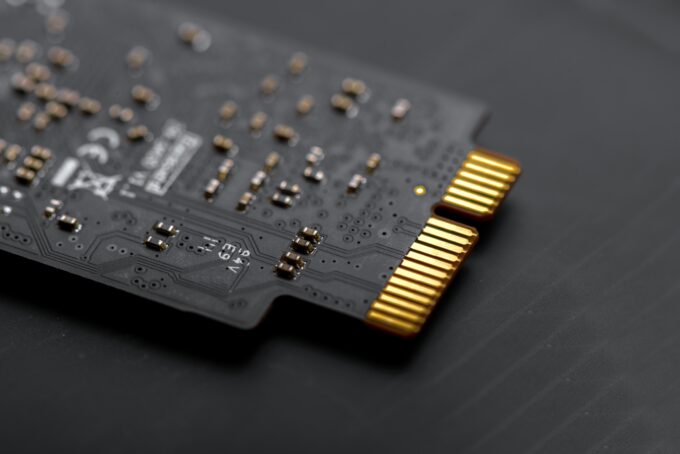As Sales Director at Aliter Networks, and as a company, we talk a lot about e-waste and the benefits of choosing refurbished IT to combat the issue downstream. But this is a reactive approach. And while we should continue talking about the pros of circular IT, it’s high time we start looking at the upstream battle too. Taking a more proactive approach where we can.
To do that, I believe developing our perspective on the issue, and improving the conversations we have around it, are crucial
“We need to question the status quo, and demand more accountability from the OEMs that ultimately set and direct ‘the way things are done”.
BROADENING YOUR VIEWPOINT
Considering how much technology infiltrates our daily lives, it’s ironic that it isn’t at the top of the radar for conscious consumers or businesses. It should be. A recent World Health Organisation report states that the amount of e-waste generated in 2019 was approximately 53.6 million metric tons (Mt), which is expected to reach 74Mt by 2030.
Of course, a big part of what I do is aim to raise awareness around this. And often taking a look at the bigger picture helps. I remember a customer sharing his ‘aha moment’ with me. He’d instigated a complete refresh policy on a room full of switches that were being handed on to an e-waste processing company.
It’s quite sentimental. He told me when he looked down from his office into the loading dock, they had a skip bin, and the processing company was taking useful products and just throwing them into it. He was thinking, ‘What the hell? That stuff was running our network, so it could run someone else’s. And I haven’t taken any responsibility to ensure it doesn’t just end up in a skip.’
“Because it isn’t like what he saw was going to be crushed up, ground down and scattered on gardens to bring up roses!”
WHERE AND WHAT
Fortunately, he made the choice to take more responsibility, and ended up finding Aliter. It helped to see the problem from a different perspective, zooming out to see more of the linear process. He was prompted to ask “Where am I sending this stuff and what’s happening to it?”
“The more a topic gains exposure, the more momentum the conversation around it grows.”
We’ve seen popular examples of this in recent years. A revolution on plastic recycling, with big businesses called upon to do better. Shifts in the food industry, as more people become vegetarian or eat less meat after learning about how mass meat production impacts our planet. Or the clothing industry, where consumers are calling for transparency around where their clothes are made, and who by.
In the case of IT, when disposing of products at end of life, you should be asking:
- Where will my product end up? (When you hand it to an e-waste processing service, or worse, if you don’t)
- What will happen to my product’s parts? Will they be broken down, repurposed or harvested?
- And if yes, in what manner

HOW AND WHY
Leading IT analyst firm Gartner has been researching e-waste for almost ten years, trying to impact decision makers. In one of their reports, they state that 79% of companies interviewed were replacing their IT products because support would be ending; the cost of old asset support would double or triple; or because unfortunately they didn’t know of any other way to support their products besides the OEM.
So if you’re choosing to renew contracts and products with an OEM, consider asking:
- Why do we need to start using the new product? Is any of the reasoning in my best interest?
- Why can’t we continue using the product I have?
- How was the new product manufactured?
If your OEM offers a take-back service:
- How do you process the product when it is returned? Is it recycled for reuse?
And perhaps one that’s particularly relevant since COVID-19 hit:
- How can you better support us during this difficult financial period?
When it comes to the ‘why’, some OEMs simply have a product that sits on a customer’s network and performs an automated scan, which feeds back to the OEM, highlighting when each client’s products are approaching end of life. Much like in the case of a car warranty ending, where a salesperson might invite you to upgrade your BMW.
But if that was your car, ask yourself: “Would I automatically walk into BMW and agree with the salesperson?” “If times were tough financially would I still choose to get a brand new car?” Or would you look for other options?
POLICY PUSH BACK
And while some OEMs are starting to scratch the surface of sustainable practices, offering take-back services, transparency and flexibility are low to no. There are no hard and fast policies that say ‘you have to guarantee that 30% of the products you’re selling have come from sustainable sources or will be disposed of effectively’. Or “if you choose to, we will extend your support for a month and allow you to pay the upgrade in 12 months”, for example.
“We need to push back and ask for sustainable changes and flexibility within contracts and policies.”
Even if we delay a product’s end of life, we still stunt the linear IT process, and that literally helps to slow the pace at which e-waste piles grow.
IT’S ON US
Ultimately, it’s supply and demand. OEMs will continue to create new products if we don’t ask for that to change – if we don’t act to decrease demand.
“The more informed we are as product users, the better prepared we are to ask the right questions and make stronger demands. It’s on us.”





